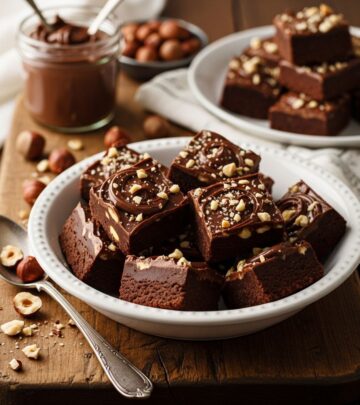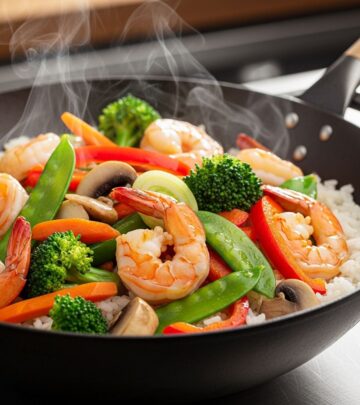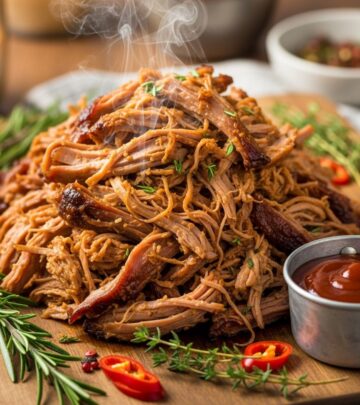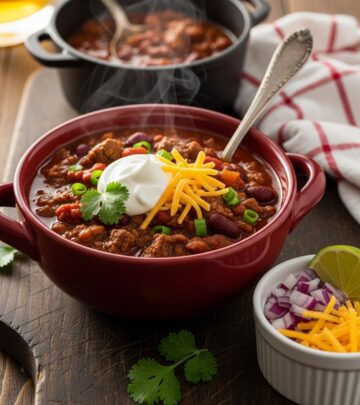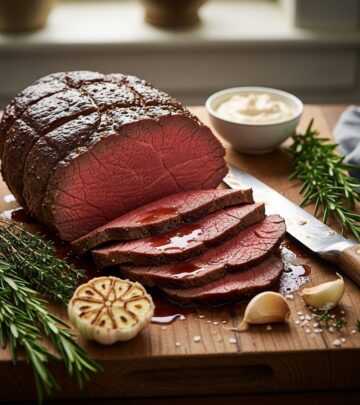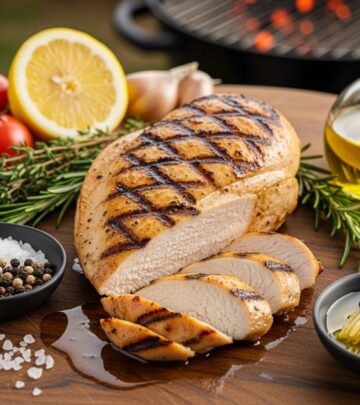Easy Slow Cooker Beef Stew Recipe: Ultimate Comfort Food Guide
Discover mouthwatering flavors and simple steps for hearty, comforting meals every time.
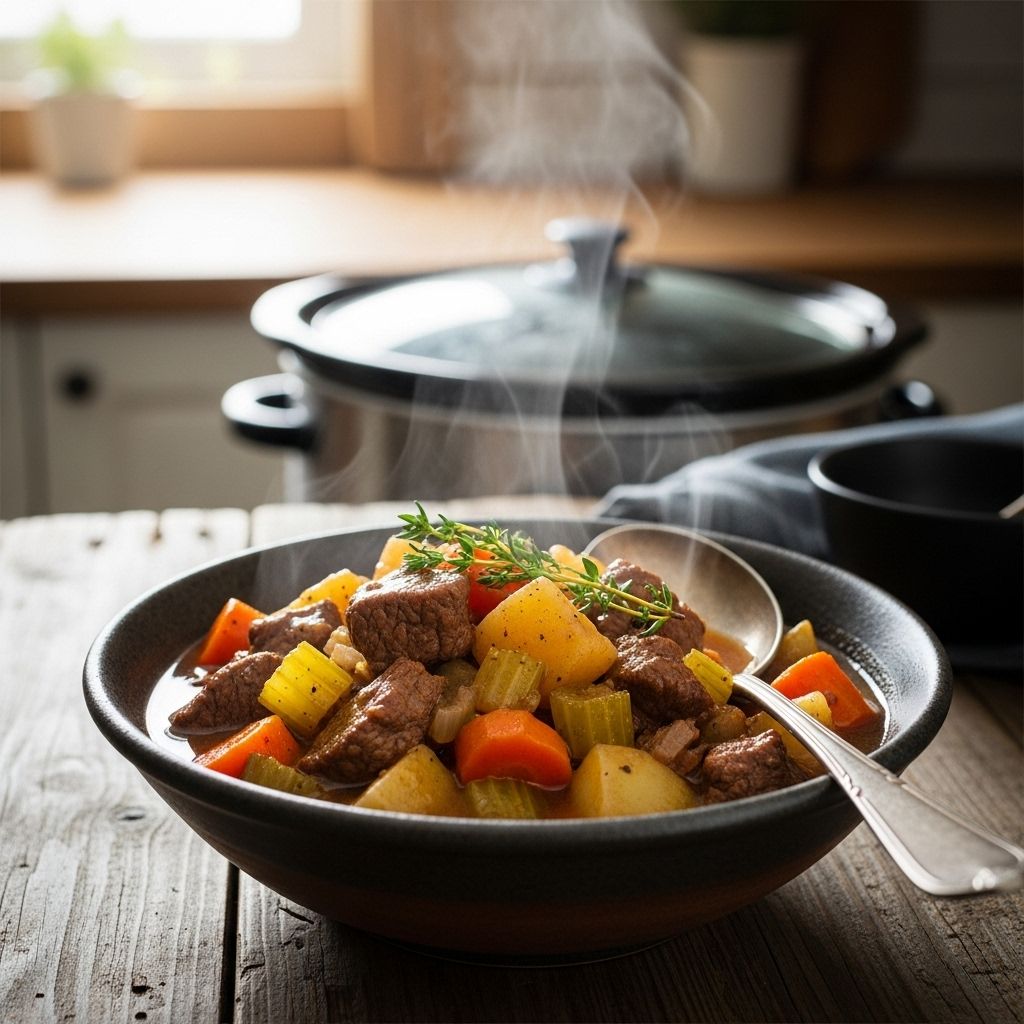
Image: HearthJunction Design Team
Ultimate Guide to Easy Slow Cooker Beef Stew
There’s nothing quite like coming home to the rich, comforting aroma of a slow-simmered beef stew after a long day. This classic slow cooker beef stew recipe delivers tender chunks of beef, hearty vegetables, and a flavorful broth that will warm you from the inside out. Perfect for busy weeknights or lazy weekends, this recipe requires minimal hands-on time while delivering maximum flavor. Let’s dive into this foolproof method for creating the ultimate comfort food that your family will request again and again.
Why You’ll Love This Recipe
This slow cooker beef stew stands out from other recipes for several compelling reasons. First, the method of flouring and browning the beef before slow cooking creates a rich depth of flavor and helps thicken the stew naturally. The combination of red wine, onion soup mix, and a carefully selected blend of herbs and spices creates a complex flavor profile that tastes like it took hours of careful attention—when in reality, your slow cooker does most of the work!
Additionally, this recipe is incredibly versatile. You can easily customize it based on your preferences or what’s available in your pantry. The slow cooking process also means that more affordable cuts of beef become incredibly tender, making this not only delicious but economical as well.
Ingredients You’ll Need
This hearty beef stew comes together with simple, wholesome ingredients that transform into something magical during the slow cooking process. Here’s everything you’ll need to create this comforting meal:
For the Beef Base:
- 3 pounds cubed beef stew meat
- ¼ cup all-purpose flour (for coating)
- ½ teaspoon salt, or to taste
- 3 tablespoons olive oil (for browning)
- 3 tablespoons butter
For the Vegetables and Aromatics:
- 3 onions, sliced
- 4 large potatoes, cubed
- 1 cup baby carrots
- 1 tablespoon dried parsley
- 1 teaspoon ground black pepper
For the Flavorful Broth:
- ¼ cup red wine
- 2 cups boiling water
- 1 (1 ounce) package dry onion soup mix
For Thickening (Added Later):
- ¼ cup warm water
- 2 tablespoons all-purpose flour
Step-by-Step Cooking Instructions
Preparing and Browning the Beef
The foundation of a great beef stew starts with properly preparing and browning the meat. This crucial step develops deep, rich flavors that simply can’t be achieved by skipping ahead to the slow cooker:
- Place your cubed beef stew meat in a large plastic bag. In a small bowl, combine ¼ cup of all-purpose flour with ½ teaspoon of salt, then pour this mixture into the bag with the meat.
- Seal the bag securely and shake it well to ensure each piece of meat is evenly coated with the flour mixture. This coating will help brown the meat beautifully and will also contribute to thickening the stew as it cooks.
- Heat 3 tablespoons of olive oil in a large skillet over medium-high heat. Once the oil is hot and shimmering, add the floured meat to the skillet. Be careful not to overcrowd the pan – if necessary, work in batches to ensure each piece gets properly browned.
- Cook the meat until it’s evenly browned on all sides. This process creates what culinary experts call the Maillard reaction – a chemical reaction between amino acids and reducing sugars that gives browned food its distinctive flavor.
- Once browned, transfer the meat directly to your slow cooker, leaving the flavorful bits (fond) in the skillet for the next step.
Creating the Flavor Base
Now it’s time to build the aromatic foundation that will infuse your stew with incredible flavor:
- In the same skillet where you browned the meat, melt 3 tablespoons of butter over medium heat.
- Add the sliced onions to the butter and sauté until they become soft and translucent, about 5-7 minutes. The onions will absorb the flavorful brown bits left behind from the meat.
- Once softened, transfer the buttery onions to the slow cooker, layering them on top of the browned meat.
- Pour ¼ cup of red wine into the still-hot skillet. Using a wooden spoon, gently scrape the bottom of the pan to loosen any remaining browned bits – this process, known as deglazing, captures all the concentrated flavors.
- Remove the skillet from heat and carefully pour the wine mixture into the slow cooker, adding another layer of complex flavor to your stew.
Assembling the Stew
With your flavor base established, it’s time to add the remaining ingredients to your slow cooker:
- Add the cubed potatoes, baby carrots, dried parsley, and ground black pepper to the slow cooker, arranging them around and on top of the meat and onions.
- In a small bowl, stir together 2 cups of boiling water and the package of dry onion soup mix until the mix is completely dissolved.
- Pour this onion soup mixture over all the ingredients in the slow cooker. The hot liquid will begin to penetrate the meat and vegetables immediately, starting the flavor-melding process.
Slow Cooking to Perfection
Now comes the magic of slow cooking, where time and gentle heat transform these simple ingredients into a cohesive, flavorful stew:
- Cover the slow cooker with its lid and set it to High heat for the first 30 minutes. This initial burst of heat helps get the cooking process started efficiently.
- After 30 minutes, reduce the heat setting to Low and continue cooking for approximately 6 hours. The exact cooking time may vary slightly depending on your specific slow cooker model and the size of your meat cubes.
- You’ll know the stew is ready when the meat is fork-tender, meaning it easily breaks apart when pressed with a fork. The potatoes and carrots should also be perfectly tender but still hold their shape.
Thickening the Stew
In the final stage, you’ll create a luxurious, thick consistency that clings beautifully to the meat and vegetables:
- About 15 minutes before serving, mix ¼ cup of warm water with 2 tablespoons of all-purpose flour in a small bowl, stirring until smooth and free of lumps. This mixture is called a slurry.
- Remove the lid from the slow cooker and gently stir in the flour slurry, making sure to incorporate it evenly throughout the stew.
- Continue cooking the stew uncovered for the final 15 minutes. The heat will activate the thickening properties of the flour while allowing some of the excess liquid to evaporate, resulting in the perfect stew consistency.
Serving Suggestions
This hearty beef stew is a meal in itself, but there are several delicious ways to serve it for maximum enjoyment:
- Classic Pairing: Serve the stew in deep bowls with crusty bread or dinner rolls on the side for sopping up the rich gravy.
- Complete Comfort: For the ultimate comfort food experience, serve over creamy mashed potatoes or buttered egg noodles.
- Fresh Addition: A simple side salad with a light vinaigrette provides a refreshing contrast to the rich stew.
- Perfect Beverage: Pair with the same red wine you used in cooking, or a robust beer that complements the hearty flavors.
Storage and Reheating Tips
Like many slow-cooked dishes, this beef stew often tastes even better the next day, after the flavors have had more time to meld together. Here’s how to properly store and reheat your leftovers:
Refrigerating:
Allow the stew to cool completely before transferring to airtight containers. Properly stored, the stew will keep in the refrigerator for 3-4 days. The flavors will continue to develop during storage, making for excellent leftovers.
Freezing:
This stew freezes exceptionally well. Portion it into freezer-safe containers, leaving a little space at the top for expansion. Frozen stew will maintain its best quality for about 2-3 months. Thaw overnight in the refrigerator before reheating.
Reheating:
The best way to reheat beef stew is slowly, either on the stovetop over medium-low heat or in a microwave on a reduced power setting. Add a splash of beef broth if needed to restore the original consistency. Heat until the stew reaches at least 165°F (74°C) for food safety.
Recipe Variations
While this classic recipe is delicious as written, don’t be afraid to make it your own with these tasty variations:
- Herbed Version: Add a bay leaf, some fresh thyme, or rosemary sprigs during cooking for an aromatic twist.
- Vegetable Boost: Include celery, mushrooms, peas, or green beans for added nutrition and flavor.
- Rich and Savory: Replace some of the water with additional beef broth or stock for an even more robust flavor.
- Tomato-Based: Add a can of diced tomatoes or a few tablespoons of tomato paste for a different flavor profile.
- Guinness Stew: Substitute dark beer for the red wine to create an Irish-inspired beef stew.
Frequently Asked Questions (FAQs)
Q: What is the best cut of beef for slow cooker beef stew?
A: The best cuts for beef stew are tough, lean cuts with plenty of collagen that breaks down during slow cooking. Chuck roast, bottom round, and beef shoulder are excellent choices. These less expensive cuts become incredibly tender when cooked slowly and impart rich flavor to the broth.
Q: Do I really need to brown the meat first?
A: While you can technically skip this step, browning the meat creates a significantly more flavorful stew. The caramelization that occurs during browning adds depth and richness that simply can’t be achieved otherwise. The few extra minutes this step requires are well worth the improved flavor.
Q: Can I put raw potatoes in a slow cooker?
A: Yes, raw potatoes cook perfectly in a slow cooker. Cut them into evenly sized pieces (about 1-inch cubes) to ensure they cook at the same rate. Place potatoes near the bottom or middle of the cooker for more even cooking, as the heat comes primarily from the sides and bottom of the appliance.
Q: What can I use instead of red wine?
A: If you prefer not to use wine, you can substitute additional beef broth, pomegranate juice, cranberry juice, or even a combination of beef broth with a tablespoon of balsamic vinegar to achieve a similar depth of flavor.
Q: Why is my beef stew meat tough?
A: Tough stew meat usually indicates it hasn’t been cooked long enough. Unlike tender cuts that become tough when overcooked, stew meat needs lengthy cooking to break down tough connective tissues. If your meat is still tough, continue cooking until it becomes fork-tender.
Q: Can this recipe be made in an Instant Pot or pressure cooker?
A: Yes, this recipe can be adapted for pressure cooking. Follow the same preparations for browning the meat and sautéing the onions, then pressure cook on high for about 35 minutes with a natural pressure release. Add the thickening slurry after pressure cooking using the sauté function.
References
- https://www.allrecipes.com/recipe/25200/slow-cooker-beef-stew-iv/
- https://www.allrecipes.com/recipe/14685/slow-cooker-beef-stew-i/
- https://www.allrecipes.com/recipe/238891/best-of-all-slow-cooker-beef-stew/
- https://www.allrecipes.com/recipe/215565/make-ahead-slow-cooker-beef-stew/
- https://www.youtube.com/watch?v=8C_ijJmYNVo
Read full bio of medha deb





